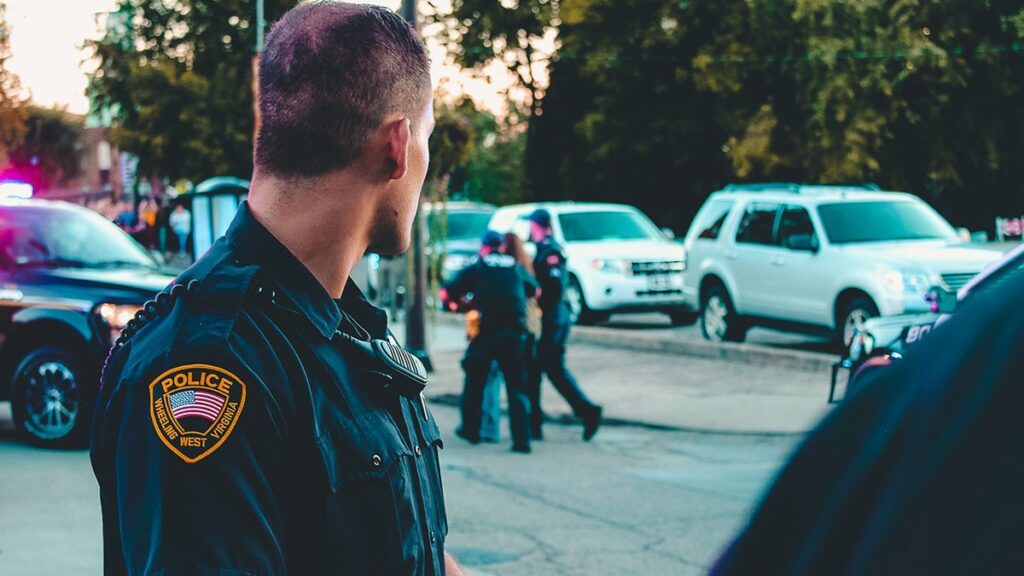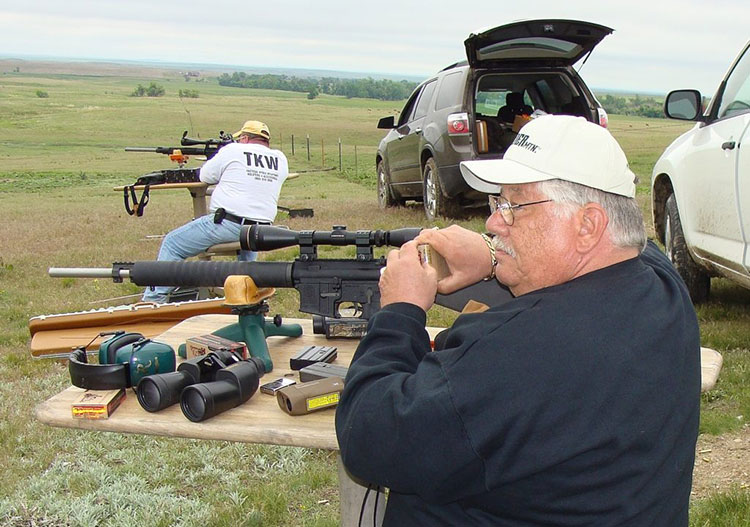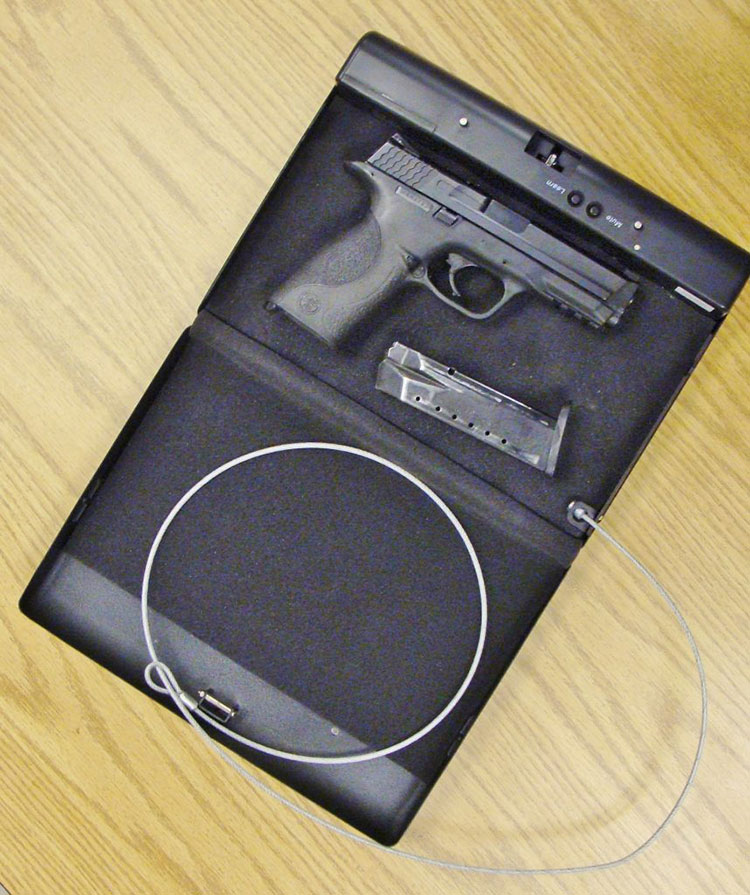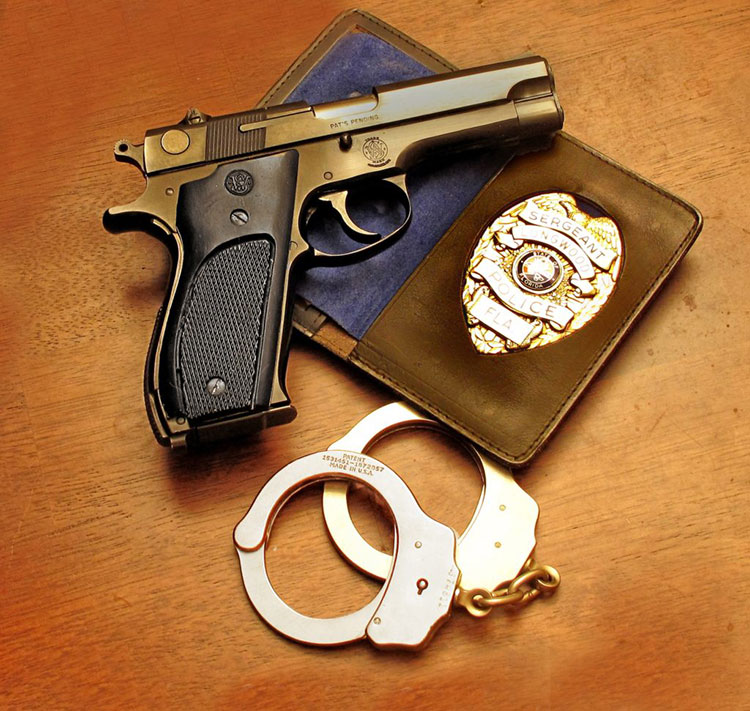
Home invasions have become the crime of choice for a certain segment of our society, with severe and sometimes fatal results for the homeowner!
Note: The author, Sgt. Domenick Leonard, is well-qualified having spent 30+ years as a Florida police officer and supervisor. Although we lived far apart our decades-long friendship continued. Sgt. Leonard sent me this article to use as I saw fit but then, unfortunately, passed away. America lost a very good man but his advice still rings true.
by Steve Markwith, contributing writer, and the late Sergeant Domenick Leonard
However, before proceeding, a couple disclaimers are warranted. First, Sgt. Leonard lived alone and had no immediate family or overnight house guests. While a readily available bedroom firearm makes plenty of defensive sense, as he noted, a secure but accessible safe is advised for most others. The latest biometric or RFID types are fast, but they require deliberate actions. The small amount of extra wakeup time could prevent a tragedy; a classic example being the disoriented homeowner who mistakes a teenage daughter’s late-night return for an intruder. Also, the proximity of other residents will need to be factored into your response plan. Finally, laws vary from state to state and not all have enacted so-called Castle Doctrines. And, even if doing everything to the letter, better factor the need for a good lawyer if you have to use lethal force to protect yourself.

I’ll let Sgt. Leonard take it from here…
Buy a Gun – Keep it Locked and Loaded
There are many very good articles available about what you can do to protect yourself during a home invasion, but here are some tips that are often overlooked. Most articles start with, “buy a gun.” I am going to presume you already knew that, that you received some good training on how to use it, and know the laws in your state regarding its use. The gun, of course, should be available near your bedside, and if you do not live alone or have children, in an easily accessible handgun safe designed for quick access purposes. In most cases, it should be loaded. You cannot safely load a gun in the dark and under stress.
Recommended safe: Hornady RAPiD Gun Safe with RFID Instant Access (also available for AR-15s)
4 Steps for Responding to a Home Invasion
Editor’s note: The first step to responding to a home invasion should actually be taking a few simples steps to slow a burglar at the door.
Step 1: Do Not Turn on the Light
When you are awakened by an obvious intruder in the night, do not turn on a light. You would be pinpointing your location and alerting the intruder that you know he’s coming.
Step 2: Get Your Gun
Getting the gun is your priority. This takes priority over calling the police as they will not get there in time to protect you unless you have already defended yourself.
Step 3: Dial 911
Once you have retrieved your weapon, dial 911. You can put the phone down and leave it, but do not hang up. The dispatcher can monitor the activity in your house and get useful information to give responding officers. Of course, if the telephone is a cordless, bring it with you.
Step 4: Get in Position
Depending on the layout of your house, you should not stay by the bed. Where is the best place for you to be? That depends. What is your field of fire?
In my house, the master bath is on the opposite side of the room from the bed. I would go there. From the bathroom door I have a clear field of fire for anyone entering through the bedroom door. I can have good concealment and somewhat good cover. Concealment hides you. Cover protects you. The average interior wall is just concealment as it cannot stop a bullet.
Are you right handed or left handed? I am right handed and can shoot right handed from the master bath. Consider this. Draw a line from each shoulder standing in front of you into an wedge shaped area. That is the area you can fire into easily. The way your body is made, if you must swing the gun out of the area to shoot you can do so easily to the left. You cannot do so to your right.
The opposite is true for lefties. That’s just the way we’re built. For a right-handed person, swinging a handgun to the right generates resistance, whereas moving it to the left does not. From my bathroom, that is not an issue as I can shoot right handed and cover the entire field of fire without leaving that wedge shaped area in front of me. The intruder on the other hand, would find me on his right where, if he is also right handed, he cannot bring the gun to bear with ease or shoot with accuracy.
Using Your Gun Against a Home Intruder

You need to keep a flashlight with your gun. Not just any flashlight, the usual general use light is useless. You need a high-intensity flashlight. I use a Fenix LD22. There are many available from sporting goods stores, especially those that deal with firearms.
The flashlight must have a momentary contact on switch. It comes on when you hold the button down, and shuts off when released (preferably, on the end of the unit so you can use your thumb). You turn it on, blind the suspect, shoot, and release the light.
Remember, there might be (and probably is) a second intruder. You don’t want that light on for more than the second it takes to aim and fire. In the layout of my home, I would hold it in my left hand braced up high on the doorframe so that if the intruder shot at the light, it is away from me. Whatever your situation, get some training. Then practice – and practice some more.
Editor note: read our reviews of Olight’s tactical/weapon lights – Valkyrie PL-PRO, Warrior Mini, and BALDR Mini.
Do not ever have your spouse roleplay as the intruder. You’ll be programming yourself that it’s OK to shoot what looks like your spouse! Instead, put something in your doorway such as box on a stool and as high as a man, high enough that the box is where center mass would be on the intruder. Making sure your gun is unloaded, practice blinking your light, dry firing multiple times at the makeshift villain.
Remember, you’re not shooting targets on the range. Do not use the sights the way you would shooting at a bullseye. Do not worry about lining the front sight up with the notch in the rear sight. You can’t see the rear sight anyway. The front sight will be silhouetted against the subject’s chest which will be lit by the flashlight. Put the front sight on his chest and fire. You’re trying to hit a good-size area from only twenty feet or less. Practice this drill until you’re very good at it. Then have your spouse practice it. Your spouse should have the same training and familiarity with the gun.
Using Lethal Force
How many rounds should you fire? Enough to stop the threat. The goal, contrary to many popular belief, is not to kill the intruder. Your goal is to, “render him incapable of continuing his aggressive action toward you.” This frequently results in death, but that death is a side effect, not the goal. I would fire until it enters your consciousness that the suspect is no longer in front of your gun. Do not leave your position.
After the Police Arrive
When the police arrive, have the dispatcher confirm their identity and that they are in fact in your house. Then you can call out and tell the officers you have a gun and ask what they want you to do. Make your weapon safe and put it down as instructed. Do not leave the bathroom if that’s where you are. Ask them what they want you to do next and follow their instructions. Remember, they also are pumped full of adrenalin! You don’t need an accident at this point. Make sure you understand the directions and do not hesitate to ask clarifying questions.
When giving your information to the police, describe what happened in very basic terms, keeping it very, very simple. Tell them you are not up to giving a complete detailed statement and prefer to do that the following day. You have just been under enormous stress and will not remember everything. You may also remember some of it differently the following day as your memory comes back.
If you try to give a detailed, lengthy statement it will be recorded and if you try to change it later, especially in a courtroom, you will be accused of lying, or changing your story to defend inappropriate actions. If the police officer insists on asking more questions, just stand firm that you are not up to it. You have the right to remain silent. If the suspect is dead, they don’t need any more at that point and you will need time to recover.
A Few Alarm Strategies
The easiest (and safest) way to deal with an intruder is to get them to leave in the first place. Nothing is better at achieving this than an alarm.
Home Alarm Systems
If you have a home alarm system, know what you do differently? Nothing. You do everything the same. If your system does not alert a central dispatch but relies on flashing exterior lights and an audible alarm, it’s almost worthless. Having a central dispatch may be a bit more reliable but can slow things down a great deal as the dispatch will try to telephone you before calling the police. They go off so often that everyone in the neighborhood universally ignores them. No one will call the police for you.
The police also do not take them seriously. For every alarm activation (business or home) set off by an actual intruder, they respond to literally hundreds of false alarms. The alarm system gives a false sense of security while, actually to the police, it is always “crying wolf.” Yes, they will respond, but it will have a very low priority over other calls for service, and when they are dispatched, no one is going to be in any hurry to get there. Too many officers have been injured in traffic crashes racing to what turns out to be a completely false alarm.
Car Alarms as Home Alarms
One other tip. Most cars today come with some form of rudimentary alarm system. You can activate it from your key fob, blowing the horn and flashing the headlights. Keep your car keys by the bedside. If there is a threat in your home, push the button on the key fob immediately. The alarm drawing attention to the house will likely cause an intruder to flee and that could be the end of it.
If you want off-the-shelf door-hardening equipment, look into Armor Concepts. They sell complete hardware to reinforce residential doors.
If they do not flee, it will pinpoint your house for the police. Even if the car is in a garage, the flashing headlights can be seen through a windowless fiberglass garage door. The police will not have to waste time looking at house numbers trying to find you. These guys have been riding around in the dark for hours and their night vision is excellent. Flashing lights behind your garage door is as good as a lighthouse. Be sure to test the key fob alarm button from your bedside to be sure the signal can reach the car from there. Most will work fine as the signal can go through walls with ease.
Home Invasion Summary
Practice whatever plan you devise. Make it second nature. Do not consider yourself paranoid and do not let preparing for an awful but unlikely event disturb you. Take satisfaction in doing everything you can to keep yourself and your family safe and have peace of mind knowing you have done what you personally can toward that end.



3 comments
Reinforced entry doors would buy a lot time. I like door jamb armor. I also like steel doors installed in a safe room in the interior of the house. That can buy additional time.
if you are gong to get a gun LEARN IT learn how load it the dark with your eyes closed learn how to clean it with your eyes closed so you clean it all by touch and REMEMBER THE BASIC RULES OF GUN USE NEVER point the weapon at something unless you are willing to destroy it NEVER put your finger on the trigger untill you are ready to destroy your target and ALWAYS KNOW whats behind your target
Good information……Thank you